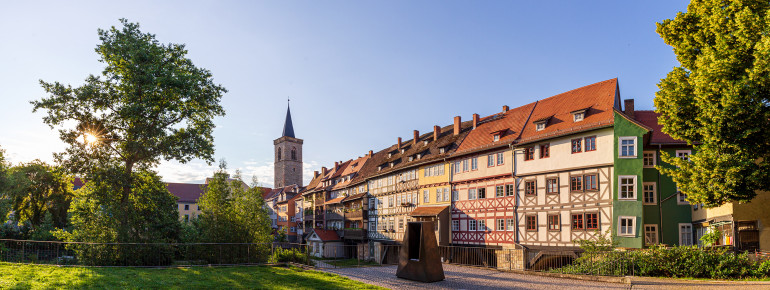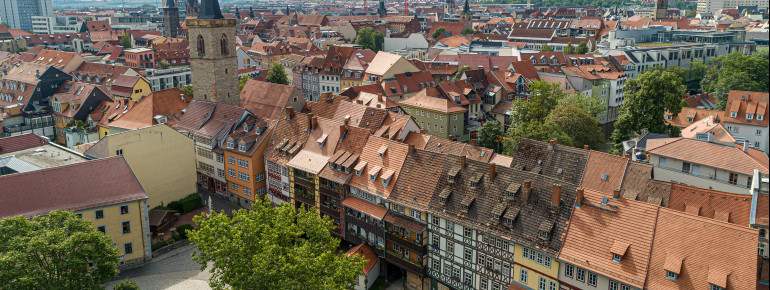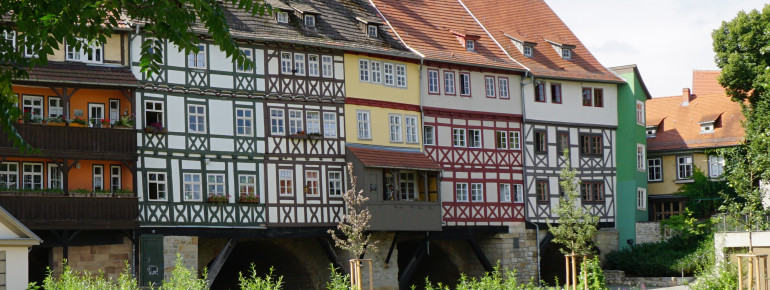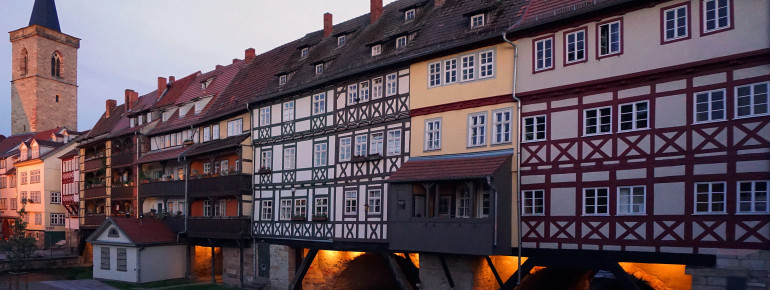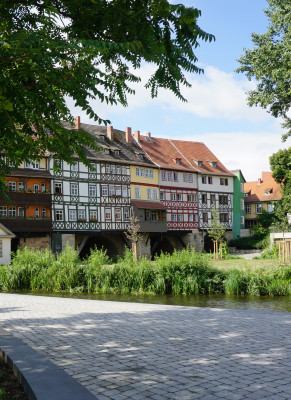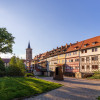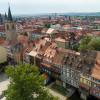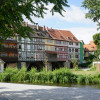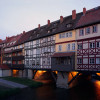Contents
Description
With a length of 120 m, the Erfurt Krämerbrücke is the longest bridge in Europe to be built and inhabited throughout with houses.
Numerous small galleries and shops with Thuringian blueprint fabrics, hand-painted ceramics, Lauscha glass, jewellery, woodcarvings as well as culinary specialities and all sorts of other little things invite you to linger and discover history.
The Krämerbrücke is not only one of Erfurt's landmarks, but also one of the city's most interesting secular buildings.
In the east the bridge is closed by the Ägidienkirche, which opens its gates daily from 11:00 - 17:00 o'clock and offers an impressive tower view of the Krämerbrücke and the old town.
Krämerbrückenfest
On the third weekend in June the time has come again: Thuringia's largest old town festival invites you to celebrate, enjoy and linger!
From 19. to 21.06.2020 the 45th Krämerbrückenfest will take place on and around the historic bridge.
Till Eulenspiegel once fooled the Erfurt professors by pretending to have taught the donkey how to read. What could be more natural than for him to also perform his jugglery anecdotes at the Altstadtfest?
And so Till Eulenspiegel drives his (un)being with population and guests every year on the weekend before the beginning of summer and opens the Krämerbrückenfest with his jokes.
A highlight is the medieval market with its special flair, which takes visitors into another world.
The festival is rounded off with a wide variety of culinary delights to complement the musical, acting and dancing programme.
Historical Information
As a former part of the famous trade route "Via Regia" - the King's Road - the Krämerbrücke was already in the 11th century an important part of one of the most important traffic routes in Central Europe.
The bridge was probably built of wood in the 8th century. After the bridge burnt down several times, the new six-arched sandstone bridge was completed in 1325. Bridgehead churches were built at both ends, whereby only the Ägidienkirche at the eastern end has survived to this day.
After a devastating city fire in 1472, today's bridge was built. Originally 62 houses were lined up on the Krämerbrücke and housed merchants who sold their valuable stuff on the bridge.
At that time Kram was the generic term for treasures such as jewellery, fabrics, spices and other small goods.
Although the narrow houses were combined into 32 buildings, the unique flair of the bridge has been preserved. Gothic, Renaissance, Baroque and even Wilhelminian style elements make the Krämerbrücke a unique, living monument!
In the "Haus der Stiftungen" (No. 31) a permanent exhibition informs about the history of the Krämerbrücke, at the same time special insights into the inner life of the bridge and the living quarters of a real bridge house are possible - a visit is worthwhile!
Interesting facts
- Merchants Bridge Erfurt is among the 3 best rated Tourist Attractions in Thuringia.
How to get there
By public transport
On foot:
The Krämerbrücke is located in the middle of the historic old town of Erfurt between the Fischmarkt with the town hall and the Wenigemarkt. From the train station you can easily reach the Krämerbrücke in about a quarter of an hour on foot.
By car:
By car, you can take the A71, B4 and B7 to Erfurt and follow the city's parking guidance system to the central multi-storey car parks, for example directly on Domplatz or in Anger1. Alternatively, you can park your car in a park-and-ride car park, for example at the trade fair and egapark, and use the trams to get to the city centre.

